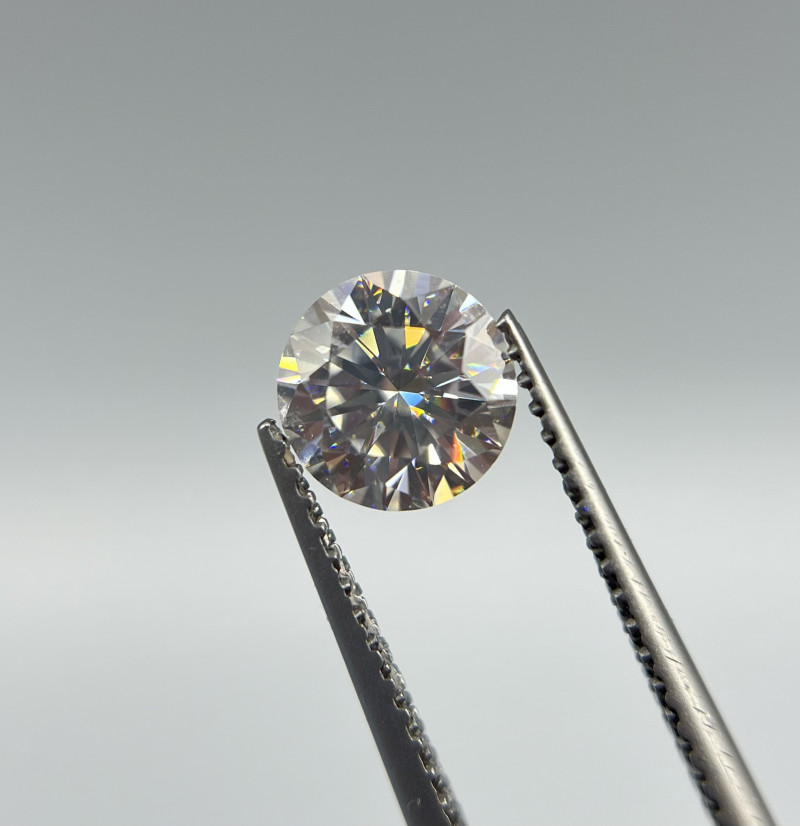The Future Sparkles: Unveiling the Shifting Landscape of Lab Diamonds

Lab-grown diamonds, once a niche market, have swiftly risen to prominence, reshaping the jewelry industry landscape. From their inception as a viable alternative to mined diamonds to their current status as a sought-after choice for consumers and industries alike, the trajectory of lab diamonds is nothing short of remarkable.
Introduction
Lab diamonds, also known as synthetic or cultured diamonds, are created through technological processes that replicate the natural conditions under which diamonds form in the Earth’s mantle. These diamonds possess the same physical, chemical, and optical properties as mined diamonds but are produced in controlled laboratory environments. The concept of lab-grown diamonds dates back to the mid-20th century, but it wasn’t until recent years that advancements in technology and increased consumer awareness propelled their market growth.
Advantages of Lab Diamonds
The allure of the future of lab diamonds stems from several key advantages. Firstly, their production eliminates the environmental and social impacts associated with diamond mining, making them a more sustainable and ethical choice. Additionally, lab diamonds are often more affordable than their mined counterparts, offering consumers access to high-quality gemstones at lower price points.
Technological Advancements
Continual advancements in technology have played a pivotal role in driving the growth and quality of lab-grown diamonds. From innovative growth techniques such as Chemical Vapor Deposition (CVD) and High Pressure High Temperature (HPHT) to sophisticated quality assurance processes, the future of lab diamonds, the industry is constantly evolving to meet the demands of discerning consumers.
Market Trends and Demand
The demand for lab-grown diamonds is on the rise, fueled by shifting consumer preferences towards sustainable and ethically sourced products. This trend is particularly evident among younger generations who prioritize environmental and social responsibility in their purchasing decisions. Moreover, industries beyond jewelry, such as technology and healthcare, are increasingly incorporating lab diamonds into their applications, further driving market growth.
Sustainability and Eco-Friendliness
One of the most significant advantages of lab-grown diamonds is their minimal environmental footprint. Unlike traditional diamond mining, which often involves land disturbance, habitat destruction, and carbon emissions, lab diamond production is a cleaner and more sustainable process. This factor resonates with environmentally conscious consumers who seek eco-friendly alternatives without compromising on quality or beauty.
Innovation in Design and Customization
Lab-grown diamonds offer limitless possibilities for creative design and customization in jewelry-making. With the ability to produce diamonds of various shapes, sizes, and colors, designers can craft unique pieces that cater to individual tastes and preferences. This level of customization resonates with consumers seeking personalized and one-of-a-kind jewelry pieces.
Challenges and Limitations
Despite their numerous advantages, lab-grown diamonds still face challenges in gaining widespread acceptance and market share. One of the primary hurdles is overcoming the perception that lab diamonds are inferior to natural diamonds. Additionally, competition from traditional diamond mining companies and regulatory complexities pose further obstacles to the industry’s growth.
Consumer Education and Awareness
Addressing misconceptions and educating consumers about the benefits of lab-grown diamonds is essential for driving market adoption. By providing transparent information about the production process, environmental benefits, and quality standards, industry stakeholders can help consumers make informed purchasing decisions and dispel myths surrounding lab diamonds.
Regulatory Framework
Establishing clear standards and certifications is crucial for ensuring consumer confidence and industry integrity. Regulatory bodies play a vital role in setting guidelines for lab diamond production, certification, and labeling, thereby safeguarding against fraudulent practices and maintaining quality standards.
Global Market Expansion
The market for lab grown diamonds is expanding globally, with growing demand across regions and industries. Emerging markets present lucrative opportunities for market players to capitalize on shifting consumer preferences and drive adoption through targeted marketing strategies and distribution channels.
Collaborations and Partnerships
Collaborations between industry players, research institutions, and government agencies are instrumental in driving innovation and market growth. By pooling resources and expertise, stakeholders can accelerate technological advancements, establish industry standards, and forge strategic partnerships for mutual benefit.
Influence on Traditional Diamond Industry
The rise of lab grown diamonds has prompted traditional diamond mining companies to reassess their strategies and adapt to changing market dynamics. While some view lab diamonds as a threat to their business model, others see opportunities for coexistence and collaboration in meeting evolving consumer demands.
Innovative Applications Beyond Jewelry
Lab grown diamonds are not limited to traditional jewelry applications but also find use in various industrial and technological sectors. Their exceptional hardness, thermal conductivity, and optical properties make them valuable materials for cutting-edge applications in electronics, optics, and even medical devices.
Investment Potential
As the market for lab grown diamonds continues to grow, investors are increasingly recognizing the potential for long-term returns. With favorable market trends, technological advancements, and shifting consumer preferences driving demand, investing in lab-grown diamonds presents an attractive opportunity for those seeking sustainable and socially responsible investments.
Conclusion
The future of lab grown diamonds is bright, with continued advancements in technology, increasing consumer acceptance, and growing market demand driving industry growth. As sustainability and ethical considerations become paramount in consumer purchasing decisions, lab diamonds are poised to emerge as the gemstone of choice for a new generation of socially and environmentally conscious consumers. With innovation, collaboration, and education, the potential for lab-grown diamonds to revolutionize the diamond industry and beyond is limitless.




